Sweeping Changes in the Special Operations Community Resulted from the Deadly Debacle at Desert One.
During the night of 24 April and into the morning of 25 April 1980, Operation Eagle Claw went from a daring and innovative rescue operation to bring home the 52 American hostages held by Iran to a failed mission that changed the way the American military conducted such missions. The failure of Operation Eagle Claw is also considered to be at least in part responsible for the ascendance of Ronald Reagan to the White House in 1980.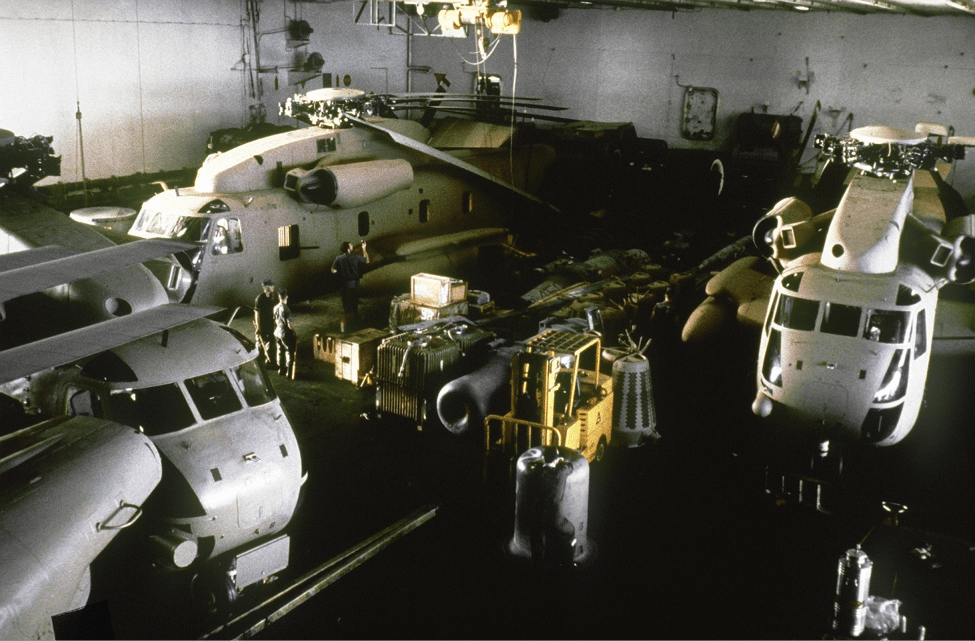
Setting the Scene
Three weeks before the rescue mission was to take place a very remote airfield in the Iranian desert was surveyed and infrared lights and strobes placed to assist pilots landing at the site. The field itself was checked and determined to be hard-packed sand- perfectly suitable for the rescue aircraft. The operational plan dictated that the site, dubbed “Desert One” would be secured by United States Army Delta Force and Rangers operators and about 6,000 gallons of jet fuel for the helos would be pre-positioned there.
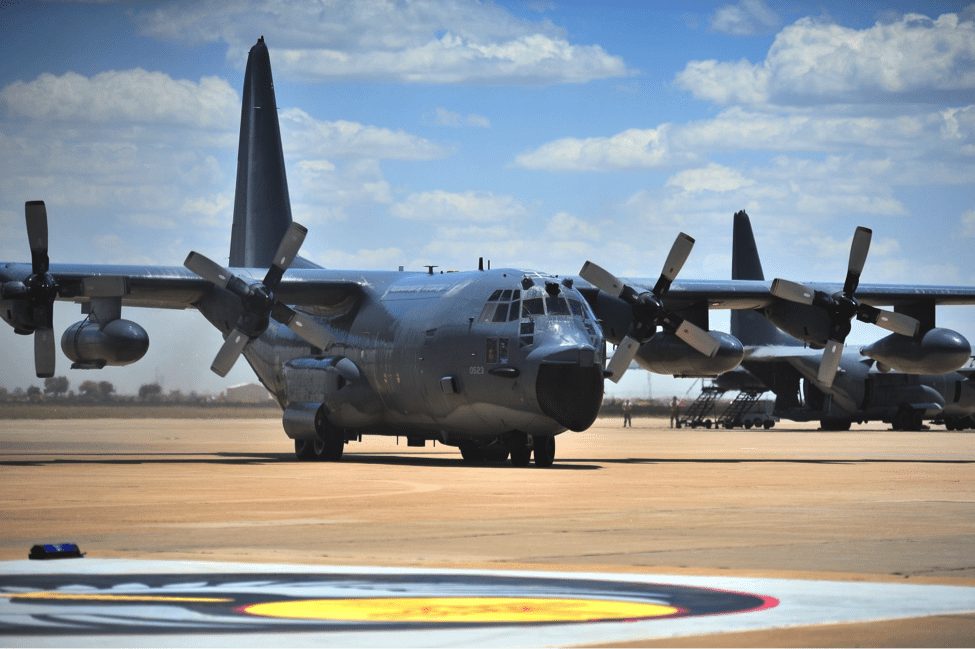
Putting the Pieces in Place
US Air Force assets were the three Lockheed EC-130E Commando Solos, using the call signs Republic 4, 5, and 6, and the three MC-130E Combat Talon 1s, using the call signs Dragon 1, 2, and 3. The EC-130Es carried fuel bladders and personnel. MC-130Es carried personnel, supplies, and equipment. Eight US Navy RH-53D Sea Stallions normally assigned to Helicopter Mine Countermeasures Squadron (HM)-16 Seahawks and HM-14 Vanguard went aboard the aircraft carrier USS Nimitz (CVN-68). Ostensibly aboard the carrier for a minesweeping mission, the helos were thoroughly checked and rechecked by their combined Navy and Marine Corps crews. They would use the call signs Bluebeard 1 through 8.
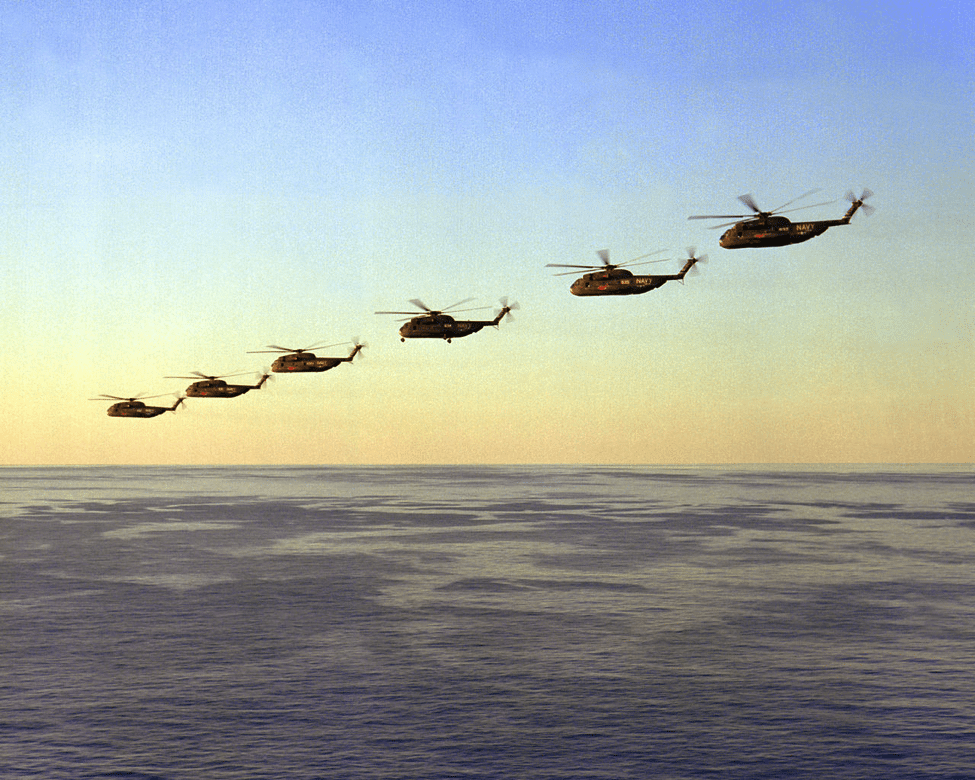
A Not-So Simple Plan
The overall plan was to fly to Desert One, refuel, then continue on to Desert Two, located 52 miles from Tehran. The American force would overnight at Desert Two and conduct the actual rescue the second day. The plan became more daring and risky with each hour. The Delta operators would drive from Desert Two to the American Embassy in Tehran to free the hostages. Army Rangers were to capture a nearby air base where Lockheed C-141 Starlifters would land, grab the hostages and their rescuers, and depart Iran. Other US Army troops were tasked with disabling electrical power. Even USAF AC-130 Spectre gunships would get in on the action by providing on-call close support of troops in contact on the ground in the Tehran area.
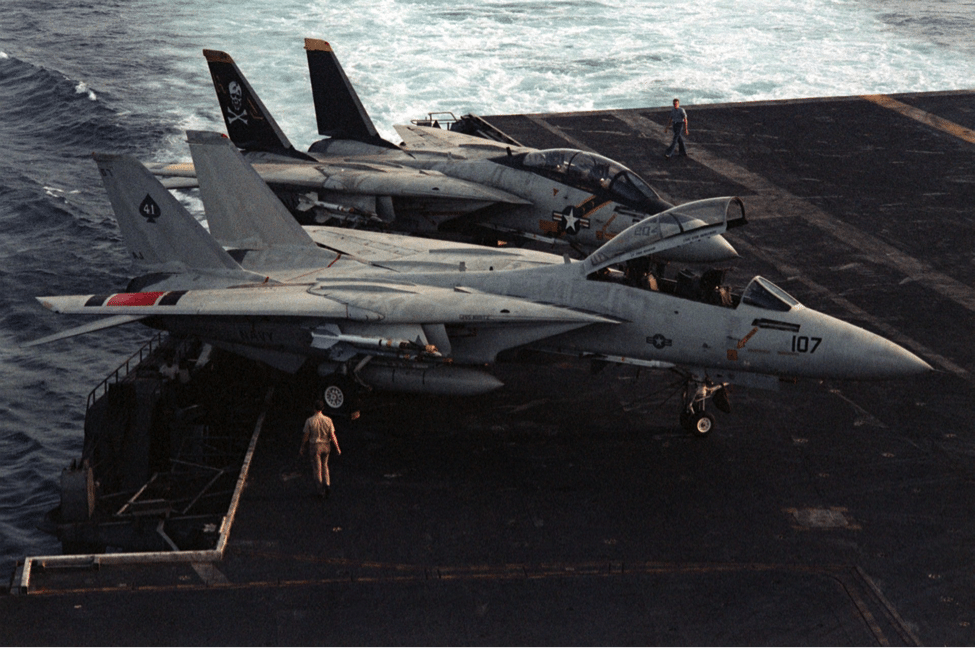
War Paint
Aboard the Nimitz and the aircraft carrier USS Coral Sea (CVA-43), efforts were underway to avoid blue-on-blue (friendly fire) accidents. The Iranians were also operating Grumman F-14A Tomcats and McDonnell Douglas F-4 Phantom IIs at the time. Because they were tasked to provide air cover over Tehran, the similar Navy and Marine carrier-based aircraft were adorned with “invasion stripes” by the crews. Carrier Air Wing 8 (CVW-8) aboard Nimitz and CVW-14 aboard Coral Sea painted these stripes on the upper and lower surfaces of the right wings of their aircraft.
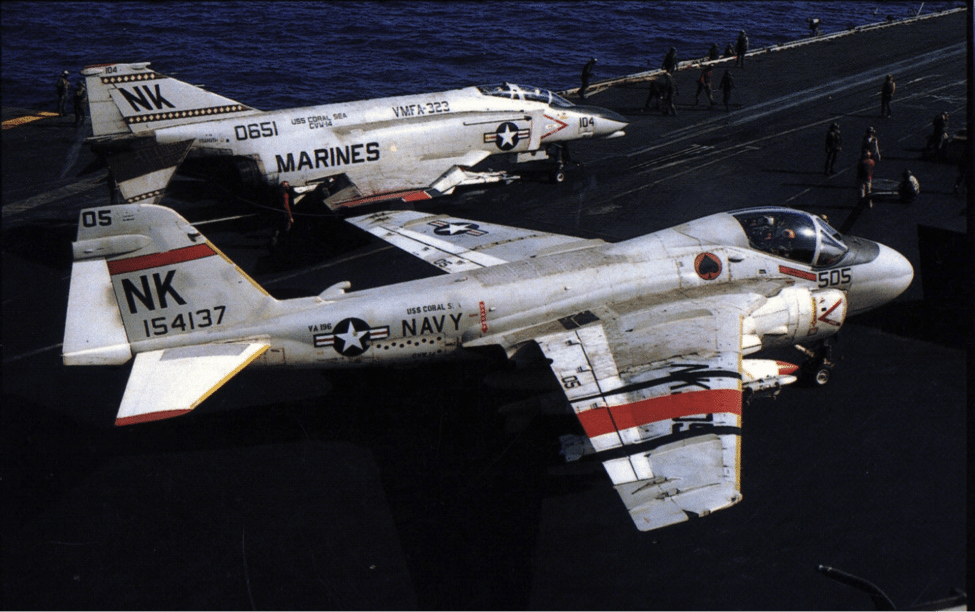
Invasion Stripes
Fighter Squadron (VF)-41 Black Aces and VF-84 Jolly Rogers used red and yellow stripes on their F-14A Tomcats. Attack Squadron (VA)-35 Black Panthers and Light Attack Squadron (VA)-82 Marauders and VA-86 Sidewinders aboard Nimitz painted orange stripes on their A-6E Intruders and A-7E Corsair IIs. Marine Fighter Attack Squadron (VMFA)-323 Death Rattlers and VMFA-531 Grey Ghosts painted red and yellow stripes on their F-4N Phantom IIs. VA-196 Main Battery and VA-27 Royal Maces and VA-97 Warhawks aboard Coral Sea painted orange stripes on their A-6E Intruders and A-7E Corsair IIs. All stripes were bordered with thin black stripes.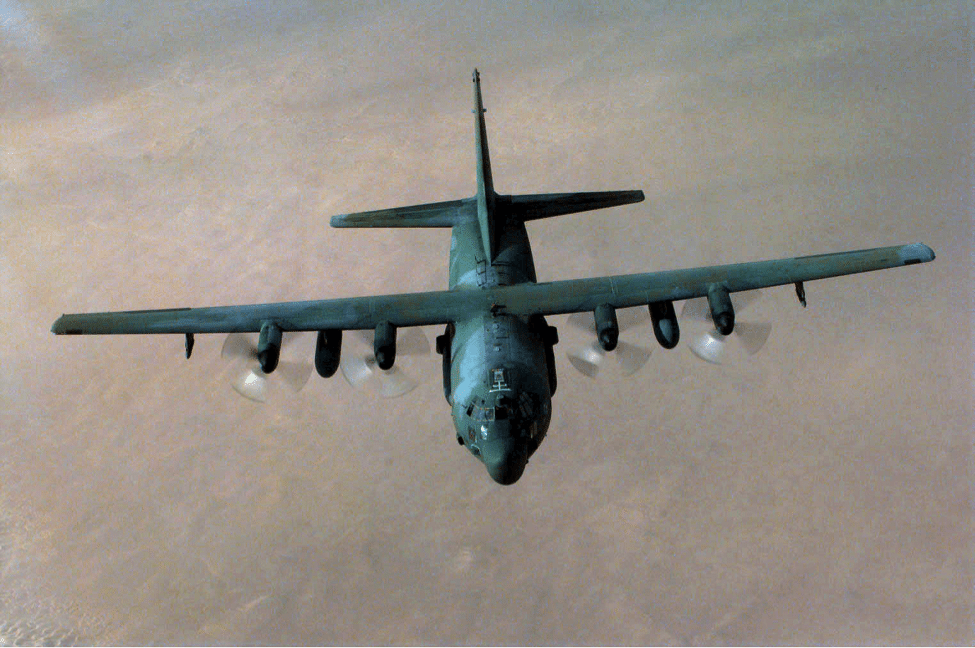
Off to a Good Enough Start
Things started out well. Departing from Masirah in Oman, the airlifters negotiated the first leg of their mission well. Except for some damage to one of the MC-130Es (Dragon 1) caused by a hard landing (the aircraft remained flyable), the protection personnel and some additional troops landed without incident after dodging habitation and the Zagros Mountains. The American troops on the ground deep within Iran prepared the site for the arrival of the Navy helos. The second two MC-130Es landed and offloaded the personnel and equipment aboard, and then returned to base in Oman to prepare for the next night’s missions. It was at this point that the operation began to unravel.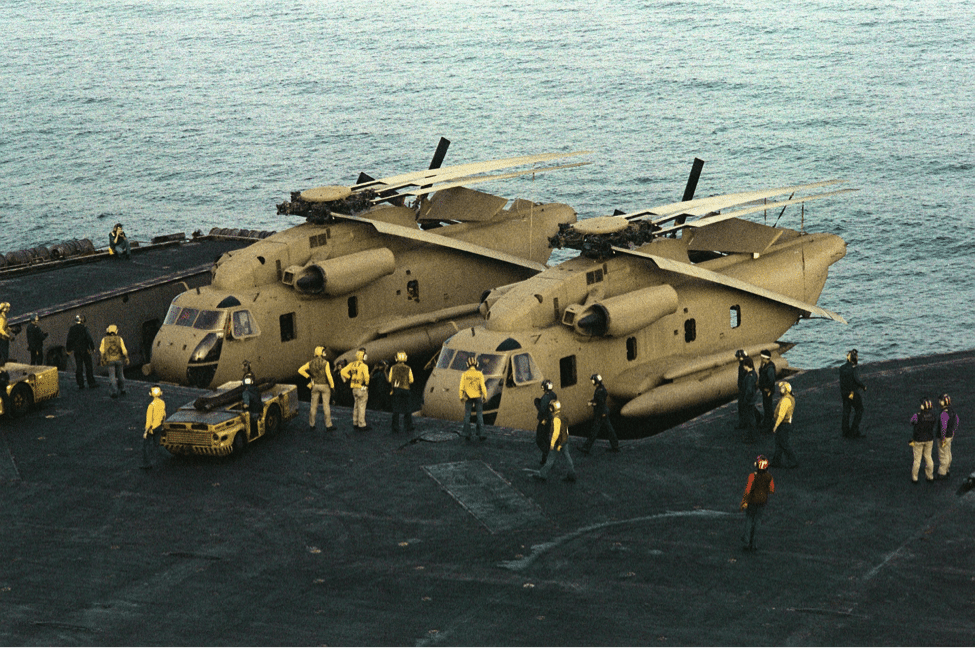
Why There? Why Then?
A tanker truck smuggling fuel came upon the site and was blown up by a Ranger team controlling the roads in the area. Although not a specific threat to the mission, the explosion and fire brought the clandestine site to the attention of everyone within miles. The incoming helos even used it to help them find Desert One. Soon thereafter, at roughly 2130 local time, a bus appeared on the scene driving on what was to be used as a runway. As a civilian vehicle it was stopped and the 40-plus passengers held. It was about time for the helos, or what was left of them, to arrive.
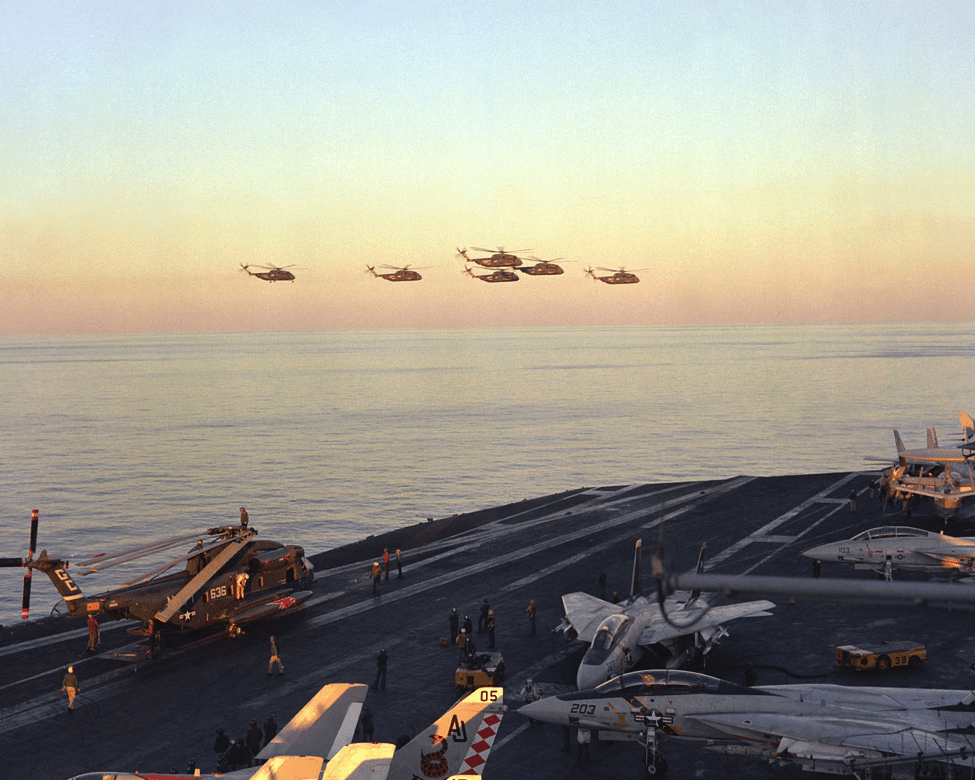
Dominoes Start to Topple
The first hint of trouble was aboard Bluebeard 6. The crew received a sensor notification that a rotor blade was cracked. Bluebeard 6 was sanitized of all material that might give the mission away and then abandoned in the Iranian desert. Bluebird 8 picked up the crew and continued toward Desert One. The other helos then encountered first a small, and then a much larger, “haboob”, essentially a hundred mile long persistent dust storm suspended in the air up to thousands of feet high. Unable to avoid these dangerous weather phenomena, Bluebeards flew through them both. Bluebeard 5 turned around and landed but the other helos did observe not them land. Bluebeard 5 eventually took off and headed toward Desert One. Another Bluebeard was forced to return to base (RTB) with instrumentation problems. This left six of the original Bluebeards available for the airlift to Desert 2. Ironically the Air Force airlifters had encountered the haboobs but failed to pass word to the helos inbound to Desert One.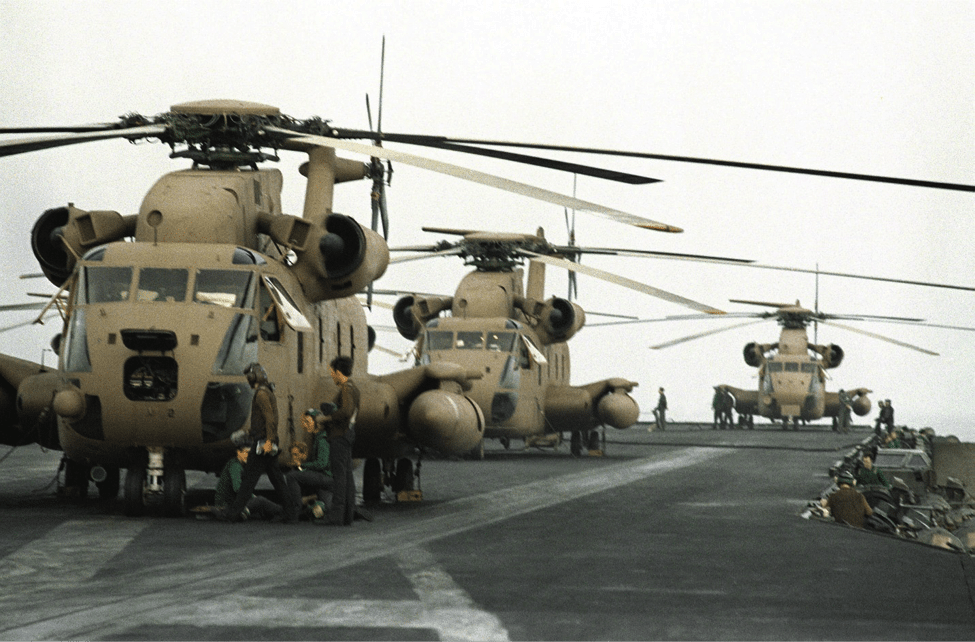

At the time of Operation Eagle Claw, the Psyops EC-130E name was not Commando Solo, instead it was Coronet Solo, because Air Force Special Operations were a part of TAC, the name of Commando Solo came about once Air Force Special Operations Command was activated, TEN YEARS after Eagle Claw. The second attempt was codenamed Operation Honey Badger, not “Project Honey Badger”. The YMC-130H was not a modified MC-130 Combat Talon-II aircraft; the MC-130H entered service years after Eagle Claw, also Ramstein is not an Air Force Base, because, USAF installations on foreign soil are designated as Air Bases, the Air Force Base designation is only used for USAF installations on US soil. Now, the Special Ops choppers flown by the Army are assigned to the 160th SOAR (Airborne), but, the air force no longer has Special Operations helicopters, instead, AFSOC flies the CV-22B Osprey for missions that the MH-60G Pave Hawk, and MH-53M Pave Low-IV used to fly.